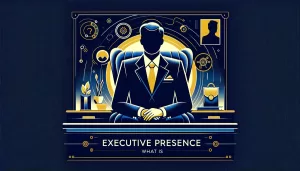Every week, I have calls with a diverse group of individuals seeking our guidance.
From chairpersons of public companies to directors of billion-dollar enterprises, owners of small businesses, and solopreneurs, they all share a common challenge: despite their accomplishments, they’re not receiving the recognition they deserve.
These are seasoned professionals, experts in their fields, yet they often find themselves overshadowed, with others in their industry capturing the majority of the spotlight.
This lack of recognition translates into a tangible deficit in their ability to create impact and wield influence.
They have the expertise and experience but struggle to leverage these assets fully, feeling the frustration of untapped potential.
In this personal branding template guide, I’ll take you through the same discovery steps we use with our clients to craft a powerful personal branding and thought leadership strategy.
If you’re looking to secure:
- Speaking engagements, receive
- Podcast invitations,
- Attract more and better clients, and
- Drive overall business growth
You’re in the right place.
Stick around, and let’s embark on this journey to amplify your professional profile and elevate your standing in your niche.
Contents
- 1 How to use this personal branding template?
- 2 What kind of personal brand will you be able to build with this template?
- 3 When people ask you, “What do you do?” what is your typical answer?
- 4 What attracts people to work with you?
- 5 What are some of the problems you help your clients solve?
- 6 What would your ideal clients search on Google or LinkedIn to find someone who can help them with those problems?
- 7 Who is your ideal client? Why?
- 8 What are some of the ways in which you are currently getting clients or growth opportunities?
- 9 How is your website and overall digital presence helping you get clients or growth opportunities?
- 10 Which are some of the companies or professionals who you consider your competitors?
- 11 Who are some of the thought leaders in your industry?
- 12 Who are some organizations/professionals who you consider to have a strong digital presence and would like to get to their level?
- 13 Are there any specific examples of thought leadership content (blogs, videos, or social media content) that you would like to create for your personal brand?
- 14 What do you want to be known for?
- 15 How to maximize this personal branding template?
How to use this personal branding template?
Before you go into this template, you need to know that this transformation won’t happen overnight.
In some cases, I’ve helped clients position themselves as go-to experts and start getting new clients organically in less than a month.
But that’s not a typical scenario.
It takes at least three to six months of continuous thought leadership content creation and distribution to start attracting organic opportunities (like clients or speaking engagements) and securing podcast guest spots.
If you are a quitter, and typically don’t stick to the things you start, then going through this template might be a waste of your time.
On the other hand, if you are ready to commit to twelve months of doing the work to grow your personal brand and thought leadership, then keep going.
What kind of personal brand will you be able to build with this template?
There are many types of personal brands and thought leadership.
We don’t build brands that are about getting famous.
We help people who have evident expertise on a topic.
This is not about TikTok virality, millions of views on YouTube, or hundreds of thousands of followers on LinkedIn.
Our strategies are focused on making sure that you become a go-to expert in your niche.
For example, you probably arrived at this personal branding template guide because you want to build your personal brand and are looking for resources or experts to help you do so.
And I showed up (well, not me but the article I wrote) at the right time to help give you the information you are looking for.
That is the same result we create for our clients.
We’ve done it in all of these cases:
And many others.
If you want to create and distribute thought leadership pieces that position you as the go-to expert in your niche, then this template will help you.
I will list all of the questions you should answer, and below I’ll go into details for each of these.
- When people ask you, “What do you do?” what is your typical answer?
- What attracts people to work with you?
- What are some of the problems that you help your clients solve?
- What would your ideal clients search on Google or LinkedIn to find someone who can help them with those problems?
- Who is your ideal client? Why?
- What are some of the ways in which you are currently getting clients or growth opportunities?
- How is your website and overall digital presence helping you get clients or growth opportunities?
- Which are some of the companies or professionals who you consider your competitors?
- Who are some of the thought leaders in your industry?
- Who are some organizations/professionals who you consider to have a strong digital presence and would like to get to their level?
- Are there any specific examples of thought leadership content (blogs, videos, or social media content) that you would like to create for your personal brand?
- What do you want to be known for?
When people ask you, “What do you do?” what is your typical answer?
This question is the biggest personal branding and thought leadership positioning opportunity that exists in the world.
And most people miss it.
You get asked this question at:
- Work meetings (let’s go around the table and introduce ourselves)
- Board meetings
- Networking events
- Get-togethers with family and friends
When you answer correctly, it leads to you owning a small place in people’s brains. You become memorable.
And when they need and expert in your field, it’s likely they’ll reach out to you.
When you answer the way most people do, by listing their professional title or the degree they have, it’s boring, and it leads to nothing.
That’s why you need to create a personal branding statement that contains your unique value proposition.
So that everything you get asked this question, you can plant a seed.
Also, you can use your personal branding statement across al your social media profiles, professional bios, speaker introductions, and many other assets.
What attracts people to work with you?
This question is about getting deeper into your unique value proposition.
While it’s true that we are not unique and delicate snowflakes (only in our mother’s eyes, we are).
There are some elements that will differentiate you from most professionals and competitors in your field.
You need to make sure that you highlight those.
It’s essential to include these in your professional bio.
You’d be surprised at how many times people decide to book a call with me after they read my bio because they identify with my story of an immigrant and introvert building a business in the United States.
It will be the same with you.
Ideally, you should be able to fill in the blanks in this phrase: I am the only [your profession] that [what makes you unique].
Take some time to think deeply about this. It will do wonders for your positioning.
What are some of the problems you help your clients solve?
You need to get deep and specific on this one as well.
The more you do so, the easier it will be to stand out and help you connect with your ideal clients.
Let’s say you are an investment advisor.
You could say you help people with their long-term financial goals and planning, but that is too broad.
You could go deeper and say something like, I help young adults plan for retirement while still being able to pay for their kids’ college education.
That will get the attention of young parents way more than “long-term financial goals and planning.”
So, list all the problems you think you help your clients solve. Build an initial list of 10 to 15 problems you think you will help them solve.
List everything that comes to your mind. Don’t edit yourself.
Then, go deeper into each of those elements and start eliminating the ones that are too similar.
In the end, you will have a great list of problems you solve that you can use on your website, in your content, marketing and promotion materials, etc.
What would your ideal clients search on Google or LinkedIn to find someone who can help them with those problems?
Once you have the list of problems you solve and the solutions to your problems, you have an excellent baseline for your thought leadership content strategy.
We focus on Google and LinkedIn because that is where the majority of people look for experts.
And our strategy is built on long-term success and compound growth.
If you write great thought leadership pieces once, and these start ranking on Google, then you will attract readers to these pieces of content for many years to come.
That is why our strategies are based on content and organic growth.
Because we want to do great work once and reap the rewards in (almost) perpetuity.
The list of ideas that result from this question will help us identify content themes, low-hanging fruit, and other valuable elements that will become the foundation of your personal branding strategy.
Who is your ideal client? Why?
Most professionals find it hard to niche down.
They feel it will limit their opportunities.
In reality, it’s the other way around.
It increases your growth potential.
So, get as specific as possible when describing your ideal client.
What are the demographics and psychographics of your ideal client?
We’ve already answered some questions related to your audience, but now it’s time to go deeper.
How knowledgeable are they in the problems you helped them solve?
Let’s go back to the financial advisor example.
Are they complete newbies when it comes to finance? Or are they super knowledgeable but they are just looking to delegate some of the legwork?
Getting specific is key because it will make your content stand out as you will be talking to them specifically.
What are some of the ways in which you are currently getting clients or growth opportunities?
Understanding your current business growth avenues is key to getting to the next level.
If you have a lot of data about how you are generating awareness, educating your audience, and turning them into prospects and clients, we need to go through that data.
If you don’t have any data, then we need to put systems in place to start collecting data.
Because it will be impossible to set goals and to track and measure progress, if we don’t have data.
So, if you are not able to answer this question with specific information, then there’s work to do.
In an ideal situation you should be able to say something like: “We attract about 5,000 organic visitors to our website every month through our blogs. Thanks to our free resources, we get about 100 new email subscribers monthly, and we book about 3 calls per week with qualified prospects.”
How is your website and overall digital presence helping you get clients or growth opportunities?
This is similar to the last question, just getting specific about your digital presence.
How are your social media profiles helping you generate awareness?
How are your website and content helping you attract, educate, and convert readers into clients?
These answers will help us establish a baseline. Then we will be able to create goals and a plan to get there with your thought leadership and personal branding strategy.
Which are some of the companies or professionals who you consider your competitors?
We need to understand the space in which you are competing so that we can help you create a strategy that stands out.
Ideally, we’ll go through the digital assets and presence of the top 10 to 20 players in your space.
This will help us get an understanding of:
- Common topics covered
- Typical lead magnet used
- Average traffic they are generating
- Consistent in creating social media content
And many other key variables that will help us create benchmarks, milestones and goals for your strategy.
Who are some of the thought leaders in your industry?
Out of all the players in your space, who do you think are killing it?
The answer to this question will help you get an understanding of where you want to be.
This will help us identify all the elements that you want to embody in your thought leadership strategy.
Who are some organizations/professionals who you consider to have a strong digital presence and would like to get to their level?
This question is about getting deeper into the digital presence of those thought leaders that you respect or look up to.
This will give us clear short-term and long-term goals that we want to accomplish as we work together.
Are there any specific examples of thought leadership content (blogs, videos, or social media content) that you would like to create for your personal brand?
This is about going even deeper into the specifics of what you like and respect in terms of content.
As you’ve probably seen in our guide about the different types of thought leaders, there are many ways to communicate your thoughts and ideas.
When you describe your preferred types of content, you’ll get insights into the type of content you would like to create.
Be as specific as possible.
- Do you like content that is highly technical?
- Do you like it when people speak or write in a conversational tone?
- Do you like it when there are a lot of visual aids, or do you prefer text only?
The answers to these questions will help you create a consistent and repeatable process to create content without overthinking and getting overwhelmed.
What do you want to be known for?
This is about what would make you proud.
What would make you feel like you’ve “made it” in your career?
Take your time as you answer this question. Go deep into your mind and heart.
This should be aspirational.
What kind of impact do you want to create in the world? What type of transformation do you want to help your clients achieve?
If this is not strong enough, you will likely not be able to get through the ups and downs of building a personal brand and becoming the go-to thought leader and expert in your field.
How to maximize this personal branding template?
The first thing you need to do is actually answer these questions.
Not just in your head.
Write them down.
You can make a copy of our personal branding template. Make sure to create a space in your calendar, maybe a couple of hours during the weekend, and answer all the questions with as much detail as possible.
If you want a little nudge, you can book a call with me, and we can talk about what helping you conduct a personal branding audit and strategy could look like.




